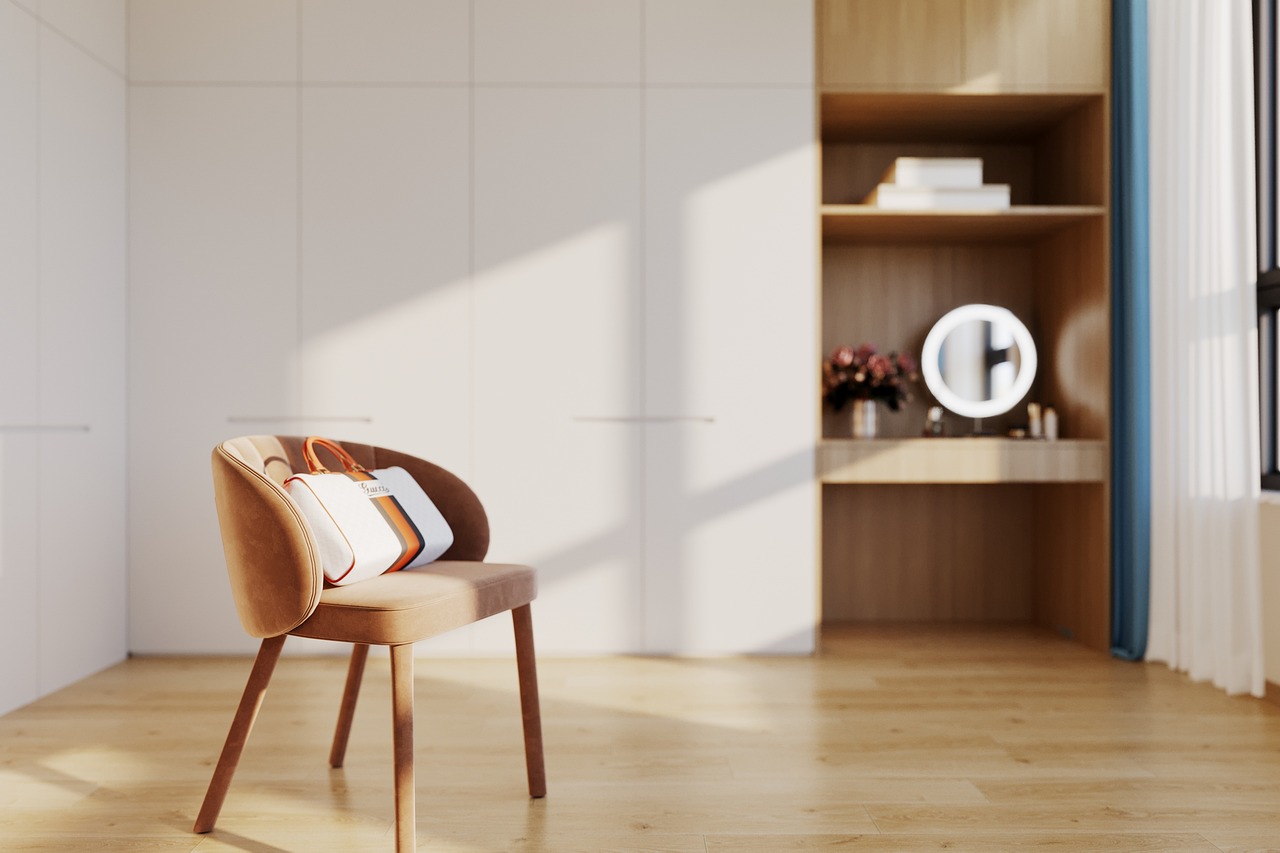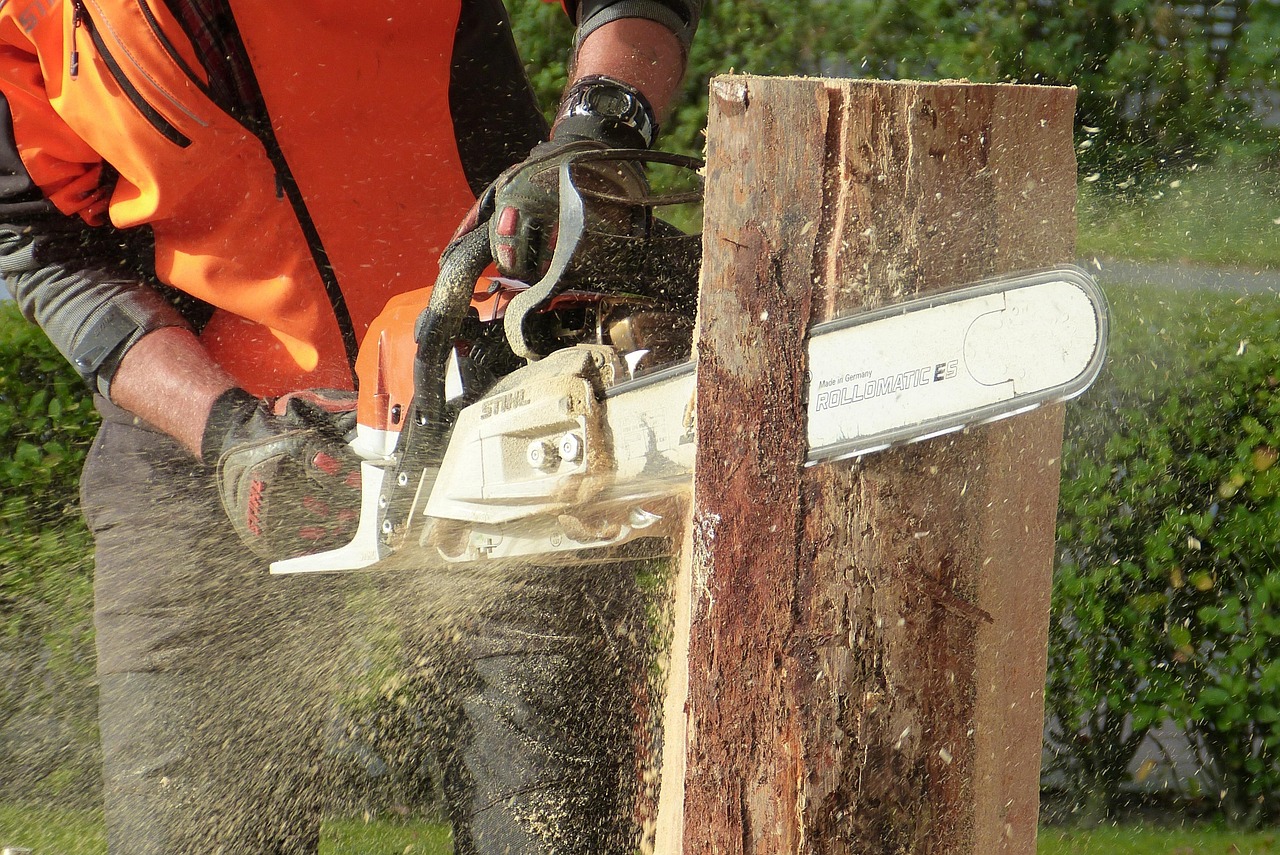Indoor tree pruning is essential for maintaining healthy plants, which can significantly improve indoor air quality. Regular pruning removes dead or unhealthy branches, encourages new growth, and enhances the tree’s ability to filter toxins from the air.
Indoor plants provide numerous benefits beyond aesthetics. They bring a touch of nature indoors and play a vital role in improving air quality. However, to maximize these benefits, proper care and maintenance are necessary. One crucial aspect of plant care is pruning. This practice not only helps in shaping the plant but also promotes healthier growth and better air purification capabilities.

Air quality can be affected by various factors, including indoor pollutants like volatile organic compounds (VOCs), dust, and allergens. Indoor trees and plants help mitigate these issues effectively. According to research conducted by NASA, certain plants can remove harmful substances from the air, making them essential for a healthier living environment.
Benefits of Indoor Trees
Indoor trees offer several benefits that contribute to overall well-being. Here are some key advantages:
- Air Purification: Plants absorb carbon dioxide and release oxygen. They also filter pollutants, contributing to cleaner air.
- Humidity Regulation: Through a process called transpiration, indoor trees release moisture into the air, helping to maintain humidity levels.
- Aesthetic Appeal: Trees add beauty and a sense of calm to indoor spaces, enhancing overall ambiance.
- Stress Reduction: Studies show that being around plants can reduce stress and increase feelings of happiness.
To fully enjoy these benefits, it is important to keep indoor trees healthy. Pruning plays a significant role in this process. It helps to remove any dead or diseased branches that may hinder the tree’s growth. Regular pruning also encourages the development of new leaves and branches, which can boost the plant’s air-cleaning capabilities.

The Importance of Pruning
Pruning is not merely a cosmetic practice; it is essential for the health of indoor trees. Here are some reasons why pruning is important:
- Promotes Air Circulation: Removing excess foliage allows for better airflow around the plant. Improved circulation can reduce the risk of mold and mildew.
- Encourages Growth: Pruning stimulates new growth by allowing the plant to direct its energy toward producing new leaves and branches.
- Improves Light Penetration: Thinning out dense areas of foliage ensures that sunlight reaches all parts of the tree, promoting even growth.
- Maintains Size: Regular pruning keeps indoor trees at a manageable size, preventing them from outgrowing their space.
How to Prune Indoor Trees
Pruning indoor trees requires some basic knowledge and techniques. Here are steps to follow for effective pruning:
- Assess the Tree: Before starting, examine the tree for any dead or damaged branches. Check for areas that are too dense and require thinning.
- Gather Tools: Use clean, sharp pruning shears or scissors. Ensure your tools are disinfected to prevent disease transfer.
- Make Clean Cuts: Cut at a slight angle just above a leaf node or branch junction. Avoid cutting too close to the trunk, as this can harm the tree.
- Remove Wisely: Focus on removing unhealthy branches first. Then, thin out areas that appear overcrowded without over-pruning.
- Clean Up: After pruning, gather and dispose of any cuttings. This prevents pests and diseases from taking hold.
Pruning not only enhances the health of indoor trees but also maximizes their ability to improve air quality. By understanding how to prune effectively, plant owners can ensure their indoor trees thrive in their environment.

The Role of Different Types of Indoor Trees
Not all indoor trees are created equal when it comes to air purification. Some species are more effective than others in removing toxins from the air. Here is a table that highlights a few popular indoor trees along with their air-purifying qualities:
| Tree Species | Air Purification Benefits |
|---|---|
| Pothos | Effective at removing formaldehyde and other toxic chemicals. |
| Rubber Plant | Great at filtering out toxins and improving humidity levels. |
| Fiddle Leaf Fig | Helps reduce dust and improves air quality significantly. |
| Spathiphyllum (Peace Lily) | Known for its ability to absorb ammonia, benzene, and formaldehyde. |
Selecting the right indoor tree species can enhance your space’s aesthetics while providing significant health benefits. Understanding how to care for them through proper pruning will further promote better air quality in your home or office environment.
Best Practices for Indoor Tree Pruning
Pruning indoor trees effectively requires understanding specific techniques and timing. Proper pruning not only maintains the health of the tree but also enhances its air-purifying capabilities. Below are some best practices for indoor tree pruning that every plant owner should consider.

Timing Your Pruning
Choosing the right time to prune your indoor trees is essential for their overall health. Here are some guidelines:
- Season: The best time to prune most indoor trees is during their active growing season, which typically spans from spring to early summer. During this period, trees can recover quickly from pruning.
- Growth Patterns: Observe your tree’s growth patterns. Prune during periods of vigorous growth to encourage stronger new growth.
- Health Check: Always assess the tree’s health before pruning. If the plant is stressed or unhealthy, it might be better to postpone pruning until it recovers.
Tools Required for Pruning
Having the right tools is crucial for effective pruning. Here’s a list of essential tools:
- Pruning Shears: Sharp and clean pruning shears are ideal for making precise cuts on small branches.
- Bypass Loppers: For thicker branches, bypass loppers provide leverage and efficiency.
- Hand Saw: A small hand saw may be necessary for larger branches that cannot be cut with shears.
- Gardening Gloves: Protect your hands while working with plants and tools.
- Disinfectant: Use a disinfectant on tools before and after pruning to prevent the spread of diseases.
Common Pruning Techniques
There are several pruning techniques that can be employed depending on the type of tree and desired results. Understanding these methods will help you achieve the best outcomes for your indoor plants.
Thinning
Thinning involves selectively removing branches to improve air circulation and light penetration. This technique is particularly beneficial for dense plants. Here are some steps:
- Identify crowded areas of foliage.
- Selectively cut back branches that are crossing or rubbing against each other.
- Aim for even spacing among branches to allow light to reach inner leaves.
Heading Back
This technique involves cutting back a stem to a bud or branching point. It encourages bushier growth and is ideal for shaping the tree. Consider these points:
- Make cuts above a node where you want new growth to emerge.
- Avoid cutting back too much; remove only about one-third of the branch length at a time.
Cleansing
Cleansing involves removing dead, damaged, or diseased branches. This practice not only enhances the appearance of the tree but also prevents the spread of disease. Follow these steps:
- Inspect the tree regularly for any signs of disease or decay.
- Remove affected branches immediately, cutting back to healthy tissue.
- Dispose of any cuttings properly to prevent contamination.
The Role of Fertilization After Pruning
After pruning, it’s beneficial to provide your indoor tree with proper nutrients to support recovery and stimulate new growth. Fertilization plays a key role in this process.
Types of Fertilizers
Selecting the right fertilizer can significantly impact the health of your indoor trees. Here are common types:
- Liquid Fertilizers: These are fast-acting and ideal for quick nutrient absorption.
- Granular Fertilizers: These release nutrients slowly over time and are suitable for long-term feeding.
- Organic Fertilizers: Derived from natural sources, these fertilizers improve soil health in addition to providing nutrients.
Fertilization Tips
To maximize the benefits of fertilization after pruning, consider the following tips:
- Avoid Over-Fertilizing: Too much fertilizer can harm the plant. Follow package instructions carefully.
- Timing: Apply fertilizer after pruning to help the tree recover and promote new growth.
- Watering: Ensure the plant is well-watered after fertilization to aid nutrient absorption.
Monitoring Tree Health Post-Pruning
After pruning and fertilizing, it’s vital to monitor your indoor tree’s health closely. Signs of stress or poor health may indicate issues that need addressing. Here are some indicators to watch for:
- Leaf Drop: Excessive leaf drop can signal stress from improper pruning or environmental changes.
- Pest Infestation: Check for signs of pests such as webbing or discolored leaves, which may require treatment.
- Disease Symptoms: Look out for yellowing leaves or unusual spots that may indicate disease.
Taking proactive measures and maintaining a close watch on your indoor trees will ensure they thrive and continue to improve air quality in your home or office environment.
Common Indoor Tree Species and Their Pruning Needs
Understanding the specific pruning needs of different indoor tree species can significantly enhance their health and air-purifying abilities. Each species has unique characteristics and growth patterns that influence how they should be pruned. Below are some popular indoor tree species and their particular pruning requirements.
Pothos
Pothos is a hardy and adaptable plant known for its air-purifying qualities. This climbing vine benefits from regular pruning to encourage bushier growth.
- Pruning Frequency: Prune every few months to maintain shape and promote fullness.
- Cutting Techniques: Use the heading back method to encourage new growth from nodes.
- Leaf Care: Remove yellow or damaged leaves promptly to keep the plant healthy.
Rubber Plant
The rubber plant is known for its large, glossy leaves and ability to thrive indoors. Proper pruning helps maintain its shape and promotes healthy growth.
- Shape Maintenance: Prune in early spring to shape the tree before the growing season.
- Cutting Method: Thinning is recommended for dense areas to improve light penetration.
- Height Management: Remove the top few inches to control height without sacrificing health.
Fiddle Leaf Fig
The fiddle leaf fig is a popular choice for indoor decor, but it requires careful pruning to maintain its unique shape.
- Seasonal Pruning: Prune during spring when the tree is actively growing.
- Pinching: Pinch off new growth at the top to encourage a fuller appearance.
- Selective Cutting: Remove any leaves that are brown or damaged to promote overall health.
Spathiphyllum (Peace Lily)
The peace lily is well-known for its stunning white flowers and air-cleaning capabilities. Pruning helps maintain its appearance and health.
- Flower Removal: After blooming, cut back spent flowers to encourage new growth.
- Leaf Trimming: Regularly trim yellow or brown leaves to maintain a tidy appearance.
- Disease Management: Remove any diseased leaves immediately to prevent spreading.
Environmental Factors Affecting Indoor Trees
Indoor trees are sensitive to their environment. Understanding how various factors impact their growth can aid in effective pruning and care. Here are some essential environmental considerations:
Light Requirements
The amount of light an indoor tree receives directly affects its growth rate and health. Consider the following:
- Indirect Light: Many indoor trees thrive in bright, indirect light. Position them near windows but avoid direct sunlight, which can scorch leaves.
- Low Light Tolerance: Some species, like pothos, tolerate low light conditions, but growth may slow down without adequate light.
- Seasonal Changes: Monitor light levels as seasons change. Adjust the plant’s location if necessary to ensure it receives sufficient light.
Temperature and Humidity
The temperature and humidity levels in your home can significantly impact the health of indoor trees. Here’s what to consider:
- Optimal Temperature: Most indoor trees prefer temperatures between 65°F and 75°F (18°C – 24°C).
- Avoid Drafts: Keep trees away from cold drafts or heat sources, such as air conditioning vents or radiators, which can cause stress.
- Humidity Levels: Many indoor trees thrive in higher humidity levels. Consider using a humidifier or placing a tray of water near the plants to increase moisture in the air.
Pest and Disease Management
Pests and diseases can pose significant threats to indoor trees, impacting their health and air quality benefits. Developing a proactive management plan is essential for sustaining healthy plants.
Common Pests
A variety of pests can affect indoor trees. Here are some common ones:
- Aphids: Small, soft-bodied insects that suck sap from plants. They can cause yellowing leaves and stunted growth.
- Spider Mites: These tiny pests thrive in dry conditions and can create webbing on leaves. They often cause leaf discoloration.
- Mealybugs: These pests appear as white cottony masses and feed on plant sap, leading to weakened plants.
Disease Symptoms
Indoor trees can be susceptible to various diseases, often characterized by specific symptoms:
- Mildew: Powdery mildew appears as a white powdery substance on leaves and can inhibit photosynthesis.
- Root Rot: Commonly caused by overwatering, root rot leads to yellowing leaves and a mushy root system.
- Bacterial Leaf Spot: This disease manifests as water-soaked spots on leaves, which can lead to leaf drop.
Treatment Options
If you notice pests or diseases affecting your indoor trees, consider these treatment options:
- Insecticidal Soap: Effective against soft-bodied insects like aphids and mealybugs, this treatment is safe for most indoor plants.
- Cultural Controls: Maintain proper watering, humidity, and sanitation practices to prevent infestations and diseases.
- Neem Oil: This natural pesticide can deter pests while being safe for the environment.
A vigilant approach toward monitoring for pests and diseases will help ensure that your indoor trees remain healthy and continue to contribute positively to your indoor air quality.
Enhancing Air Quality through Indoor Tree Care
Indoor trees play a significant role in improving air quality in our homes and offices. By understanding how to properly care for and prune these plants, we can maximize their benefits. Regular pruning not only keeps indoor trees healthy but also enhances their ability to filter harmful toxins from the air.
As we have discussed, maintaining indoor trees involves several key practices, including proper pruning techniques, understanding species-specific needs, and monitoring environmental factors. Additionally, being aware of potential pests and diseases is crucial in ensuring the longevity and health of these plants.
Creating a Routine for Tree Care
To achieve the best results, establish a consistent care routine for your indoor trees. Consider the following steps:
- Regular Inspections: Frequently check your indoor trees for signs of pests or diseases. Early detection is key to effective treatment.
- Scheduled Pruning: Plan pruning sessions seasonally, focusing on early spring when growth is most vigorous. This will help trees recover quickly.
- Watering Schedule: Develop a watering routine based on the specific needs of each tree species. Ensure that the soil remains moist but not soggy to prevent root rot.
- Nutrient Management: Fertilize during the growing season to support healthy growth and recovery from pruning.
Combining Plants for Optimal Air Quality
Incorporating a variety of indoor plants can further enhance air quality. Different species can target various pollutants effectively. Here are some tips for combining plants:
- Diversity of Species: Include plants such as snake plants, Boston ferns, and peace lilies alongside your indoor trees. Each species has unique abilities to purify air.
- Group Plants Together: Arranging multiple plants together can create a microclimate that supports humidity and improves overall health.
- Consider Plant Size: Use larger trees as focal points in a room while placing smaller plants at varying heights to create visual interest.
The Psychological Benefits of Indoor Plants
The benefits of indoor trees extend beyond air quality. Numerous studies suggest that having plants indoors can positively impact mental health. Here are some psychological benefits:
- Reduces Stress: Studies indicate that being around greenery can lower stress levels and promote relaxation.
- Enhances Focus: Indoor plants have been linked to improved concentration and productivity, making them ideal for workspaces.
- Boosts Mood: Interacting with plants or simply being in their presence can elevate mood and increase feelings of happiness.
Final Thoughts
In summary, the practice of indoor tree pruning and care is essential for promoting better air quality and overall well-being. By understanding the specific needs of various tree species, implementing effective pruning techniques, and maintaining a consistent care routine, plant owners can significantly enhance the health of their indoor trees.
Moreover, recognizing the psychological benefits that indoor greenery provides adds another layer of value to these plants. Creating a diverse indoor garden not only purifies the air but also transforms spaces into serene environments conducive to relaxation and productivity.
Ultimately, investing time and effort in maintaining indoor trees yields substantial rewards. From cleaner air to improved mental health, the benefits are manifold. Embrace the art of indoor tree care, and enjoy the myriad advantages that nature offers within your home or office.
